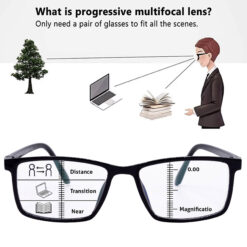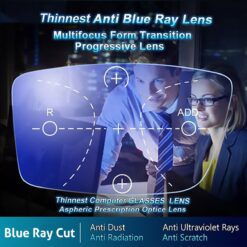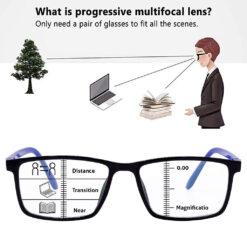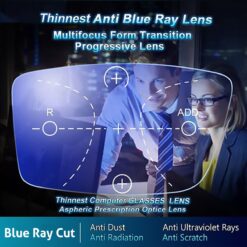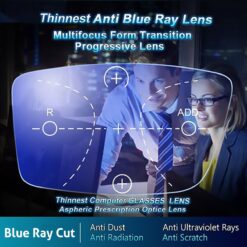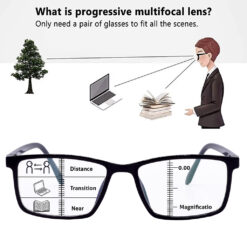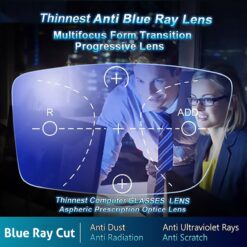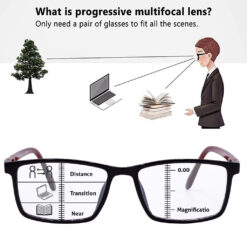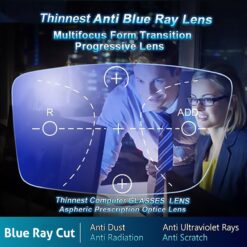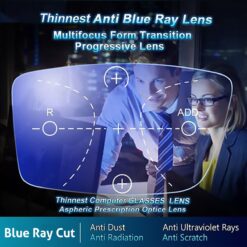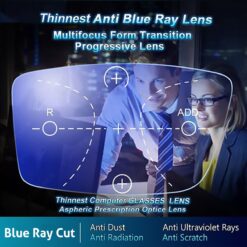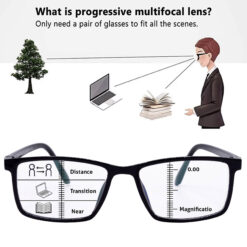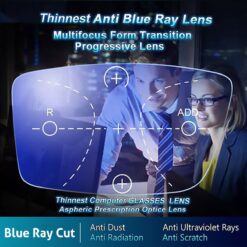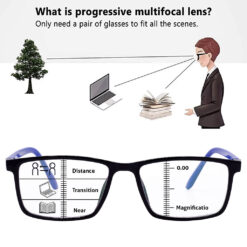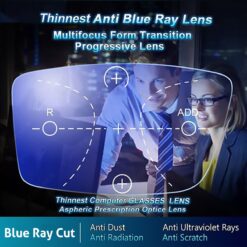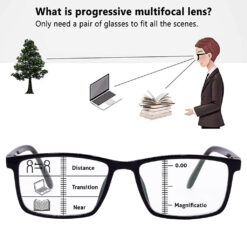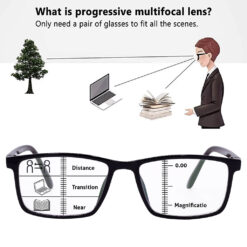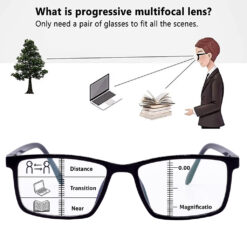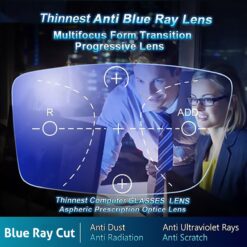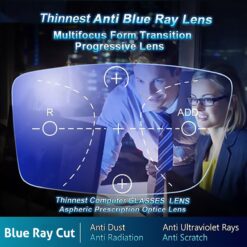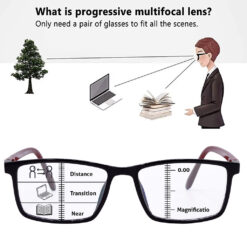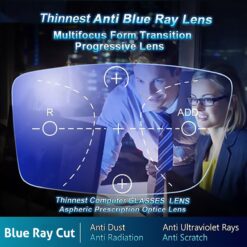Progressive Reading Glasses
Progressive Reading Glasses
Progressive Reading Glasses
Progressive Reading Glasses
Progressive Reading Glasses
Progressive Reading Glasses
Progressive Reading Glasses
Progressive Reading Glasses
Progressive Reading Glasses
Progressive Reading Glasses
Progressive Reading Glasses
Progressive Reading Glasses
Progressive Reading Glasses
Progressive Reading Glasses
Progressive Reading Glasses
Best Place To Buy Progressive Glasses Online
Finding the best place to buy progressive glasses online isn’t just about spotting a discount; it’s about pairing the right lens design with daily life so reading menus, working on a laptop, and driving feel natural without switching frames every hour. The sweet spot is a store that guides the choice between standard, premium, and digital progressives, helps nail the measurements, and backs it with a fuss‑free remake guarantee—because adaptation is real, and support makes all the difference. If the plan is convenience with comfort, a reliable online experience with expert fit checks and clear after‑sales policies will save both time and eye strain, especially when stepping into no‑line multifocals for the first time.
What Are Progressive Glasses—and Why They’re So Popular
Progressive lenses are no‑line multifocals that blend distance, intermediate, and near powers across one lens, so the eyes glide through zones without harsh jumps or visible lines on the lens surface. The big perk: they remove the need to carry separate reading and distance glasses, which means switching from laptop to phone to TV feels more natural once the brain learns the viewing zones. People who prefer a clean look also like progressives because they avoid the “bifocal line,” offering a uniform aesthetic while maintaining clarity across tasks with a short learning curve for most wearers.
How progressive lenses work (distance, intermediate, near)
Think of the lens surface as a smooth hill where the top handles distance, the middle handles computer range, and the bottom handles reading, creating a seamless transition as the eyes adjust tilt and head position to find the crispest area. Because powers change gradually, there’s less “image jumping,” which reduces disorientation compared to traditional bifocals, although first‑timers may feel mild swim until they adjust their viewing habits. This smooth power gradient is why frame fit and lens measurements matter—small changes in height or PD can shift zones and affect comfort.
No visible lines and smooth transitions
No visible segment lines mean nothing announces “multifocal,” and the power shift is gradual, helping the brain adapt to the zones with less distraction while moving between tasks like typing and reading. The benefit shows up most when switching distances frequently during the day because progressives reduce the constant on‑off dance of swapping readers and distance glasses. The result, after a short training phase, is simpler daily vision management that feels integrated rather than piecemeal.
Who should consider progressive lenses
Great candidates include anyone who’s stretching the arm to read, juggling readers and distance glasses, or struggling to see a monitor comfortably at a normal working distance. Progressives are also useful for people who already wear correction for myopia, hyperopia, or astigmatism and now need help up close, combining everything into one pair that looks like regular glasses. Even some children may use progressive designs under clinical guidance to manage focusing issues, though that’s more specialized and prescription‑driven.
Signs it’s time to switch
If reading small print triggers strain, menus need extra light, or computer viewing feels fuzzy unless leaning forward, a multifocal solution is likely due, especially if single‑vision glasses no longer manage both near and far comfortably. When the wallet carries two separate pairs for different tasks, consolidating into one progressive pair can simplify life while keeping style intact. The decision often becomes obvious when daily routines involve repeated near‑intermediate‑distance shifts that single‑vision lenses can’t handle well.
Choosing Progressive Lenses Online: A Simple Step‑By‑Step
The journey starts with an up‑to‑date prescription and correct measurements, especially pupillary distance (PD) and fitting height, because progressives rely on precise alignment for each viewing zone to sit where the eyes naturally look. Next, match lens category—standard, premium, or digital—to daily needs and prescription complexity so corridor width and peripheral clarity keep pace with real‑world tasks instead of only reading charts. Finally, lock in coatings and materials that suit the routine—anti‑reflective for glare, blue‑light filtering for screens, and high‑index for thinner, lighter lenses at higher powers.
Start with prescription accuracy and PD
Progressives are unforgiving about sloppy inputs, so confirm sphere, cylinder, axis, add power, and PD from a recent check to prevent misalignment of zones that can cause swim or headaches. If previous glasses felt off, it’s often a measurement issue rather than the concept of progressives—correcting PD and fitting height usually transforms comfort within days. When ordering online, choose stores that verify measurements and offer easy remakes to support the initial adjustment period without added stress.
Lens measurements that matter for progressives
Key metrics include monocular PD for each eye, segment height calibrated to the chosen frame, and sufficient frame depth so the near zone has room to breathe, preventing a cramped reading area. A stable, well‑seated frame keeps the optical centers locked, so the zones don’t shift mid‑day, which is why fit tweaks like nose pad adjustments can make a night‑and‑day difference. These small details ensure the corridor flows smoothly from distance to near without forcing head tilts that strain the neck or eyes.
Match lens type to daily routine
If most of the day sits at a laptop with frequent glances to a second monitor, a design prioritizing intermediate width will feel far more natural and will reduce side‑to‑side searching for the sweet spot. Heavy driving might nudge the choice toward designs with optimized distance clarity and stable peripheral control to keep the road and mirrors comfortable for long stints. If reading and crafts dominate, go for a wider near zone, trading a bit of distance width for a generous, easy‑to‑find reading area that reduces fatigue.
Computer/office vs driving vs reading priorities
Office progressives emphasize intermediate clarity for screens at arm’s length, making spreadsheets and video calls feel relaxed without constant chin lifts or neck strain. Driving‑friendly options tame peripheral distortion and keep distance crisp across the top portion, supporting quick glances between road, dashboard, and mirrors with fewer refocus jitters. Reading‑centric designs expand the bottom zone so books, phones, and documents snap into focus without hunting for the micro‑sweet spot, ideal for long reading sessions.
Types of Progressive Lenses You’ll See Online
Most stores categorize progressives as standard, premium, or digitally surfaced, with each step improving corridor smoothness, peripheral control, and personalization to prescription and frame fit. Digital or personalized designs use advanced surfacing to expand usable areas and reduce swim, which first‑timers appreciate because it shortens the learning curve noticeably. There are also special‑purpose variants like office progressives, ground‑view for outdoor activity, and photochromic versions for those who go in and out of bright light frequently.
Standard, premium, and digital progressives
Standard options offer the essentials and work fine for moderate adds, but corridors can feel narrower, especially in the near zone for first‑time wearers. Premium tiers improve peripheral clarity and widen the reading area, creating a more forgiving experience when scanning screens or documents for hours. Digital or custom designs leverage computer‑aided surfacing to tailor the lens to prescription and wearing parameters, leading to sharper vision at all distances with fewer adaptation bumps.
Corridor width and peripheral clarity explained
Corridor width is the usable channel of clear vision as powers change; wider corridors mean less head movement and easier “find and focus” behavior for reading and screens. Narrow corridors can push wearers into excessive chin lifts or side tilts, which is why premium and digital designs are favored by people who spend long hours at computers or read for extended periods. Peripheral control reduces the “swim” at the edges so walking down stairs or scanning a room feels more natural, especially in early days of use.
Specialty variants (computer, ground‑view, photochromic)
Computer or office progressives prioritize the middle and near zones, perfect for multi‑monitor workflows and creative desks where distance clarity isn’t the main job. Ground‑view designs enhance lower‑lens and peripheral awareness, helpful for outdoor enthusiasts and hobbyists who move a lot while needing stable footing cues. Photochromic options add light‑adaptive tinting on top of progressive powers for people who constantly move between indoors and bright sun, cutting glare without swapping frames.
Who benefits from each type
Pick office progressives if a majority of hours are spent at screens, reducing eye strain and neck compensation when reading across wide documents. Choose ground‑view or stability‑focused designs for active routines with frequent movement, where edge clarity matters for comfort and safety. Opt for photochromic if bright light shifts are part of the day, combining multifocal convenience with automatic sun protection for a simpler carry.
Price Guide: Progressive Glasses Cost in India (2025)
In India, progressive lenses typically range from about ₹3,000 to ₹20,000 depending on material, brand tech, and add‑ons like anti‑reflective coatings or photochromic layers, with digital or personalized designs trending higher due to advanced surfacing. Local comparisons in 2025 also highlight themed guides and price walkthroughs that help shoppers decide when stepping up to premium tiers makes real‑world sense for comfort and clarity. Some sellers and creators publish current-year price insights, including updates for popular brand lines with progressive options and coating bundles, useful for planning a balanced budget.
What drives the price—materials, coatings, brand tech
Material choice matters because high‑index lenses thin down stronger prescriptions, improving comfort and aesthetics but adding cost, while coatings like anti‑reflective boost clarity by cutting glare from screens and headlights. Brand‑level technologies that personalize the lens to the prescription and wearing parameters often deliver wider corridors and better edge control, which smooths the adaptation phase—especially useful for first‑time wearers. Seasonal deals and bundles can lower the final bill, making premium benefits more accessible without compromising the must‑have features for daily use.
Smart ways to save without compromising clarity
Hunt for festive or seasonal offers, and consider package deals that include frames plus coatings since bundled pricing can be kinder on the wallet than piecing everything separately. If the prescription isn’t very high, mid‑index materials paired with a quality anti‑reflective coating often hit the sweet spot of clarity, weight, and price without jumping to the priciest tiers. Prioritize lens design over designer frames when budgeting—comfortable vision pays back daily, while frames can be upgraded later if needed.
Frames That Work Best With Progressives
Frames with enough vertical depth give the near zone room to breathe, making reading easier without hunting for the sweet spot, while very shallow frames can cramp the corridor and make adaptation slower. Balanced, well‑fitted frames keep optical centers aligned all day, which is crucial for progressives because tiny shifts can push the eyes into the wrong zone mid‑task. Lightweight builds with adjustable nose pads help maintain stable positioning, reducing the micro‑tilts that cause sporadic blur at the edges.
Frame height and shape for a wider reading zone
Aim for shapes that offer adequate lens height so both intermediate and near areas have space; round, rectangle, or modest wayfarer profiles often work well without feeling oversized on the face. Ultra‑narrow or fashion‑low silhouettes can look sleek but may force compromises in reading comfort if the near segment gets squeezed. The idea is to leave enough canvas for the corridor to flow, so the eyes glide from screen to phone naturally without posture acrobatics.
Comfort, nose pads, and stability matter more here
With progressives, slippage isn’t harmless—it shifts zones, so comfortable temples and grippy pads help keep clarity locked in through a busy day of movement and screen time. A quick fit tweak often solves recurring “why is this blurry now?” moments, turning a frustrating day into a comfortable one without changing the prescription. Stability becomes the quiet hero of progressive comfort, especially during the first weeks while the brain maps routes through the lens.
Adaptation: Getting Comfortable With Your New Lenses
Most people adapt over a few days to a few weeks if they wear their progressives consistently, letting the brain learn the zones instead of swapping back to old glasses during the break‑in period. First‑timers often do better with a design that offers a wider reading area, as it reduces the hunt for focus and accelerates that “click” moment where everything feels intuitive. The biggest trap is choosing the cheapest, narrowest corridor for a first pair—upgrading to a wider, more forgiving design usually transforms the experience from struggle to comfort.
Realistic timelines and daily training tips
Start by wearing the new glasses for several hours each day, gradually increasing time as comfort improves, and move the head slightly instead of only darting eyes to find the clearest spot through the corridor. Keep posture neutral and look straight ahead for screens to avoid peering through the wrong section, which can trigger unnecessary blur and annoyance early on. Small, steady practice with reading and laptop work trains the brain quickly, often turning the learning curve into a short hop rather than a slog.
Common mistakes and quick fixes
If things feel off, check for frame slippage or tilt first—tiny fit changes can restore clarity across zones instantly without changing lenses. Avoid flipping between old single‑vision readers and new progressives during the first week; consistency helps the brain adjust faster and reduces mixed‑signal confusion. If discomfort lingers, a remake with refined measurements or a design upgrade to widen the corridor usually resolves it.
Must‑Have Lens Add‑Ons For Everyday Comfort
A good anti‑reflective coating is non‑negotiable for clear, glare‑free vision on screens and at night, and it also makes lenses look nearly invisible in photos and calls. Blue‑light filtering can help with long digital sessions, and photochromic layers add convenience for those who step into bright light often without wanting separate sunglasses. Higher‑index materials make stronger prescriptions thin and light, improving comfort and aesthetics without sacrificing optical performance when paired with quality coatings.
When each upgrade makes a visible difference
If headlights and screen glare are a daily headache, anti‑reflective coatings deliver an instant clarity boost that most wearers notice on day one. If the routine lives around monitors and phones, blue‑light filtering can reduce perceived fatigue as the day stretches, especially in office‑style progressive designs. For higher powers, high‑index materials clean up thickness at the edges so frames sit better and feel more balanced across long days.
Trust Signals: What Makes A Store The “Best Place” Online
Look for clear return and remake policies, especially for progressives, since a small percentage of buyers need refits or design tweaks during the adaptation window. Virtual try‑on, verified reviews, and optional prescription checks show the store invests in a smooth experience rather than leaving shoppers to figure it out alone. Transparent pricing for coatings and materials builds trust, and responsive support closes the loop when small adjustments can create a big comfort upgrade.
Return policies, remake guarantees, and after‑sales support
A store that supports remakes for fit‑related issues encourages first‑timers to try progressives without fear, knowing adjustments will be handled professionally. Fast customer service and pro tips on adaptation—like head movement and posture—often prevent returns because minor habit tweaks solve the discomfort quickly. When policies are easy to understand, shoppers focus on choosing the right lens instead of worrying about what happens if it needs a tweak.
Virtual try‑on, reviews, and prescription checks
Virtual try‑on helps shortlist frames with enough height for progressives, making the lens choice effective before checkout, while reviews offer real‑world comfort signals beyond specs. Prescription verification bridges the gap between clinic and cart, reducing rework and ensuring the right add power and distances match daily tasks from day one. Together, these tools make buying progressives online feel personal and guided rather than risky.
2025–2026 Trends In Progressive Lenses
Recent updates highlight AI‑aided personalization and digital surfacing that tailor lens behavior to age, tasks, and even head‑eye movement patterns, widening corridors and stabilizing vision during motion. Brands continue refining how quickly lenses adapt to shifting focus—especially for dynamic tasks—so users experience fewer swim effects while turning or glancing rapidly. Expect greater emphasis on customization packages that combine coatings, material upgrades, and task‑specific designs to make first‑fit success rates even higher.
What these upgrades mean for daily comfort
Wider usable zones mean less head wagging and more natural reading across a screen, making desk work smoother for people who spend hours between spreadsheets and chats. Better peripheral control reduces that “rocking boat” sensation on escalators and stairs that sometimes shows up in early days with older designs, cutting adaptation time for newcomers. In short, tech improvements translate directly into a calmer, clearer day with fewer micro‑adjustments to see comfortably.
Quick Comparison: Value vs Premium Progressive Options
Value tiers cover essentials for moderate adds and lighter routines, especially if most tasks shift between distance and occasional reading rather than marathon screen sessions. Premium and digital tiers widen corridors and improve edge control, ideal for heavy computer use, frequent reading, or anyone who struggled with narrow designs in the past. If it’s a first progressive or a demanding desk job, stepping up usually pays off in less strain and faster adaptation; simpler needs can stick to value and allocate budget to coatings instead.
Who should upgrade—and who doesn’t need to
Upgrade if the day is screen‑heavy, the add power is higher, or previous attempts felt cramped; those cases benefit most from wider, calmer corridors that reduce scanning fatigue. If the prescription is mild, tasks are mixed but not intense, and budgets are tight, a well‑chosen value design with anti‑reflective coating can still deliver a great experience. The decision should match lifestyle intensity rather than just chasing labels, ensuring money goes where comfort actually improves.
Care, Cleaning, and Longevity
Use a microfiber cloth and lens‑safe cleaning solution, avoiding harsh chemicals that can damage coatings, since AR layers make the biggest everyday clarity difference. Store glasses in a case and avoid placing them lens‑down on desks—small scratches near the corridor can create irritating hotspots that distract while reading. With normal use and care, plan for periodic updates as prescriptions change; coatings and materials last longer when cleaned gently and consistently.
Protecting coatings and keeping clarity crisp
Rinse off dust before wiping so particles don’t scrape the surface, especially around the high‑use near zone where micro‑marks show up fastest. Quick midday cleans help progressives feel “fresh focus” for the afternoon, particularly on long screen sessions where smudges create subtle haze. Consistent gentle care keeps the corridor clear and the edges calm, preserving the lens benefits that make progressives feel effortless after adaptation.
When to replace lenses
If reading requires more chin lift than before or intermediate clarity feels cramped, the add power or design may need updating to match current habits and work setup. New coatings and modern digital designs can restore that wide, easy clarity, especially if the previous pair was a narrow corridor that felt fussy on screens. Replacement is less about age in months and more about comfort in minutes—when effort creeps back in, it’s time to refit.
Signs You Need A Refitting Or Remake
Persistent swim, neck tilts to find focus, or headaches after a week of consistent wear usually point to measurements or frame fit rather than a permanent mismatch with progressives. Slipping frames or misaligned PD can nudge eyes off the corridor, creating avoidable blur pockets that vanish with a professional adjustment. If comfort doesn’t click, a remake with refined fitting heights or a different design focused on the main task—reading or screens—often fixes things quickly.
Distortion, headaches, narrow reading zone
If the reading area feels like a moving target, the corridor may be too narrow for the routine; switching to a wider design reduces the hunt and improves posture naturally. Headaches after screen time can signal glare sensitivity—adding or upgrading anti‑reflective coating often clears this up alongside a fit check. Distortion at edges that doesn’t settle after a week might indicate design mismatch, and a stability‑focused option can bring relief fast.
How to work with support to fix it
Share daily tasks, typical screen distance, and where blur appears during the day so support can recommend the right corridor and fit tweaks with precision. Ask for a re‑measurement of PD and fitting height and consider a design that prioritizes the zone used most—intermediate for screens or near for reading‑heavy work. Stores with remake support make this straightforward and ensure the final pair fits both the face and the routine comfortably.
Why OpticalIndia Is Built For Progressive Shoppers
OpticalIndia focuses on making progressives simple to choose and easy to love, starting with clear guidance on lens types and measurements so first‑time wearers avoid the usual pitfalls like narrow reading zones or frame height issues. The experience is designed for everyday Indian routines—screens, commutes, and reading—so suggestions lean practical: anti‑reflective by default, blue‑light for desk‑heavy days, and frame picks with enough height for comfortable corridors. With shopper‑friendly support, measurement checks, and remake‑ready policies in mind, the goal is to turn progressives from a question mark into a daily comfort upgrade—exactly what “Best Place To Buy Progressive Glasses Online” should mean.
Seamless online journey for progressives
Expect a guided flow that asks about screen time, driving, and reading habits, then suggests designs that match the actual day rather than generic labels, which cuts adaptation time and adds confidence from first wear. Built‑in tips explain how to wear and train with the new lenses, so the brain maps zones faster and the week‑one experience feels smoother. It’s a practical, value‑driven way to shop progressives online—efficient, supportive, and tuned for real life in India.
Support, policies, and shopper‑friendly perks
Clear policies and responsive help reduce the stress of trying progressives online, and a commitment to measurement accuracy and fit ensures the lens design performs the way it should in daily use. Add‑on guidance keeps spending focused on what actually improves comfort, like AR coatings and corridor width, instead of paying for features that won’t be used. This is how a store earns the tag “best place”—by making the complex feel simple and the results feel consistently good.
Conclusion
Buying progressive glasses online becomes straightforward when the process prioritizes accurate measurements, the right corridor for daily tasks, and essential coatings that keep vision crisp across the day. Start with an honest look at routine—screens, driving, reading—and choose a design that serves the most time‑consuming task, adding anti‑reflective as standard and blue‑light or photochromic where it genuinely helps. With solid support, remake‑friendly policies, and practical frame picks, progressives shift from something people “tolerate” to a daily comfort upgrade—exactly what the best place to buy progressive glasses online should deliver in India.

